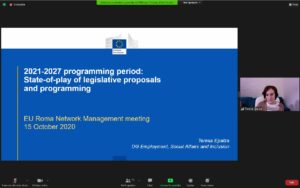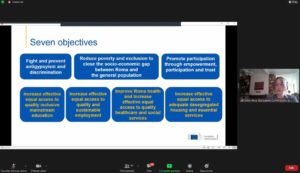On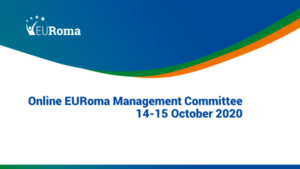 14-15 October 2020, the EURoma online Network Management Committee shared information and views on the new EC Strategic Framework for Roma Equality, and put together strategic ideas for programming EU Funds aligned with Roma Policy Priorities.
14-15 October 2020, the EURoma online Network Management Committee shared information and views on the new EC Strategic Framework for Roma Equality, and put together strategic ideas for programming EU Funds aligned with Roma Policy Priorities.
With over 70 participants, including NRCP, EU Funds Managing Authorities and a large European Commission (EC) representation (DG EMPL, JUST, REGIO and NEAR) the meeting was structured in two blocks: 1) The use of ESI Funds of the 2014-2020 programming period to address the impact of the Coronavirus crisis on Roma population and 2) The new EU Roma Strategic Framework for Roma equality, inclusion and participation 2020-2030; and 2021-2027 Multiannual Financial Framework (MFF) and Roma inclusion (preparation of Programmes at national/regional level).
Nicolas Schmit, EU Commissioner for Jobs and Social Rights through video intervention opening remarks reminded participants that “achieving equality, inclusion and participation of Roma is not only a fundamental right; a European Pillar of Social Rights´ imperative”. He also stressed the need for policy and funding to go hand in hand: “Our investments must lead us where we want to go: to fair societies that ensures equal opportunities to all. We owe it to the Roma community.” Mr. Schmit focused on how tools as ESF+ will give us new opportunities to improve the inclusion of Roma on the long and short term, overcoming deficiencies of the current programming period.
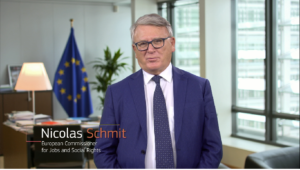
As Angel Frontelo, Deputy General Director of ESF Managing Unit from Spain stated, “Every policy needs funding but also funding needs good policies”, being next programming period the opportunity for all stakeholders to address significant measures for Roma people.
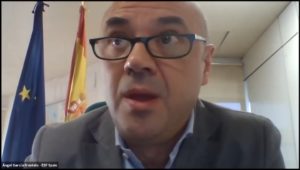
Patricia Bezunartea, Director General of Family Diversity and Social Services of the Ministry of Social Rights and 2030 Agenda stressed the value of EURoma network which “has a become a valuable actor at European level as regards Roma policies and EU funds: it has the capacity to bring together the bodies with such responsibilities. It has contributed to include Roma issues in ESF Managing Authorities´ agenda and to better align both policies and funding”. She underlined the challenge ahead for Member States in the coming years to overcome the persistent inequality, social exclusion and discrimination of the Roma community. 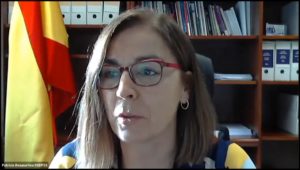
ESI Funds as a tool to address the impact of COVID19 on Roma population
The first day, discussion was around the use of ESI Funds of the 2014-2020 programming period to address the impact of the Coronavirus crisis on Roma population. From the EC, both Andor Urmos (DG REGIO) and Teresa Epalza (DG EMPL) provided valuable input regarding the different EU initiatives launched at European level to counter the negative impact of the crisis in Member States: the use of ESF, FEAD and ERDF, CRII and CRII+ and REACT-EU (introducing amendments to the rules governing the ESF & ERDF (CPR)) and revision of FEAD regulation; and provided an overview of Member States’ use of the flexibilities offered by CRII and CRII Plus for 2014-2020.
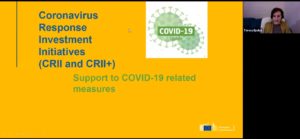
EURoma Technical Secretariat shared the results from EURoma Snapshot: how ESI Funds are initially used or planned to be used to address the impact of COVID19 crisis on Roma that provide an overview of the main findings carried out through a questionnaire to the Network members in April 2020. It reviews the actions undertaken in different partner countries in relation to EU Funds and Roma negative impact of COVID19.
The main challenges shared by participants were how to address the dramatic impact of COVID 19 on Roma population due to the gap on access to sanitary and health services, the worsening socioeconomic conditions and the digital gap that affects significantly children education.Practices such as Hungary’s system for data collection from mentors working in the field, or Portugal’s Intercultural municipal mediators collecting needs on the ground to be translated in programming, were shared.
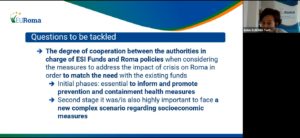
EU Strategic Framework for Roma equality, inclusion and participation 2020-2030 & 2021-2027 Multiannual Finacial Framework
The second day, partners discussed around the new EU Strategic Framework for Roma equality, inclusion and participation 2020-2030 & 2021-2027 Multiannual Finacial Framework with the input from Dora Husz (DG JUST) who provided a detailed analysis of the EC policy proposal on Roma for the next decade, with special attention paid to the necessary (improved) alignment with financial instruments. After her input, again Teresa Epalza and Andor Urmos provided information of the state of the play of 2020-2021 Multiannual Financial Framework and Roma inclusion with a view to discuss among partners the already ongoing preparation of Programmes at national/regional level.
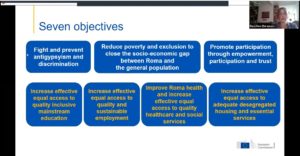
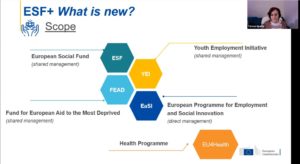
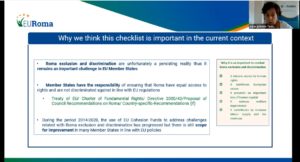 To facilitate Member States duty to program EU Funds in alignment with their policy priorities reflected in their National Roma strategies (due by September 2021), the EURoma Technical Secretariat shared an initial draft of EURoma´s Checklist for the Effective Inclusion of Roma interventions within EU Cohesion Funds programming 2021-2027, a guiding document for departments responsible for programming EU Cohesion Funds in Member States and the EU.The checklist aims to facilitate effective programming of EU Funds to address the main challenges that Roma still face in order to make significant impact on Roma equality, inclusion and non-discrimination. To that end is of utmost importance to prioritise medium- and long-term programming, align EU investments with national strategies´ needs assessment and priorities and to that end, to foster the combination of EU Funds (i.e. ESF+ and ERDF) to amplifying the positive impact of EU funds for Roma equality and inclusion.
To facilitate Member States duty to program EU Funds in alignment with their policy priorities reflected in their National Roma strategies (due by September 2021), the EURoma Technical Secretariat shared an initial draft of EURoma´s Checklist for the Effective Inclusion of Roma interventions within EU Cohesion Funds programming 2021-2027, a guiding document for departments responsible for programming EU Cohesion Funds in Member States and the EU.The checklist aims to facilitate effective programming of EU Funds to address the main challenges that Roma still face in order to make significant impact on Roma equality, inclusion and non-discrimination. To that end is of utmost importance to prioritise medium- and long-term programming, align EU investments with national strategies´ needs assessment and priorities and to that end, to foster the combination of EU Funds (i.e. ESF+ and ERDF) to amplifying the positive impact of EU funds for Roma equality and inclusion.
EURoma members also shared the importance of combining a targeted approach, that mentions Roma explicitly but not exclusively, to address situations with a higher inequality or exclusion gap, together with a mainstream approach that includes Roma among general policies such as, for example, education, housing or rural and urban development
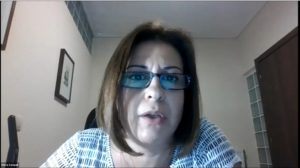

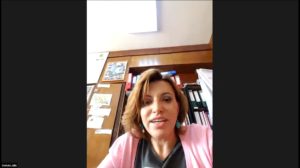
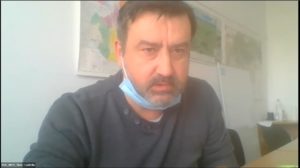
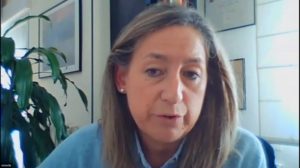
EURoma’s Checklist provides guidance for both programming targeted and mainstreamed measures and to better align EU programming with policy priorities. The Checklist could be also disseminated to regional decision makers and particularly, those in charge of EU Funds, to promote more and better investments on Roma at regional level, in alignment with national policies and investments.The final version of the Checklist will be released soon.
Closing remarks
EURoma Management Committee ended with final remarks from Katarina Ivanković-Knežević, Director for Social Affairs at DG Employment, Social Affairs and Inclusion from the EC: “At the EC, we appreciate the work that EURoma is doing”. She stressed that now “ it is the time for MS to make use of EU funds (ESF and ERDF) when needed; to ensure that support reaches those who need it the most”. She also emphasized how we need to ensure that our policies and funding are aligned: “there needs to be a clear correspondence between the European Semester and the programming of funds”. Katarina Ivanković-Knežević highlighted how the EC is going to monitor to those MS with challenges on Roma inclusion, particularly those whose Annexe D of their country reports 2019 identify Roma as one of the objectives. In addition, she said, the EC is going to closely follow-up the strategies of combining mainstream and targeting of marginalises communities in 2021-2027 in programming documents. “Roma should be supported under all EU Funds´ specific objectives and ultimate goal should be the inclusion of Roma into mainstream education, healthcare policies, housing.”
The next Management Committee will be held in spring 2021.
EURoma Snapshot: how ESI Funds are used to address the impact of COVID-19 crisis on Roma.

